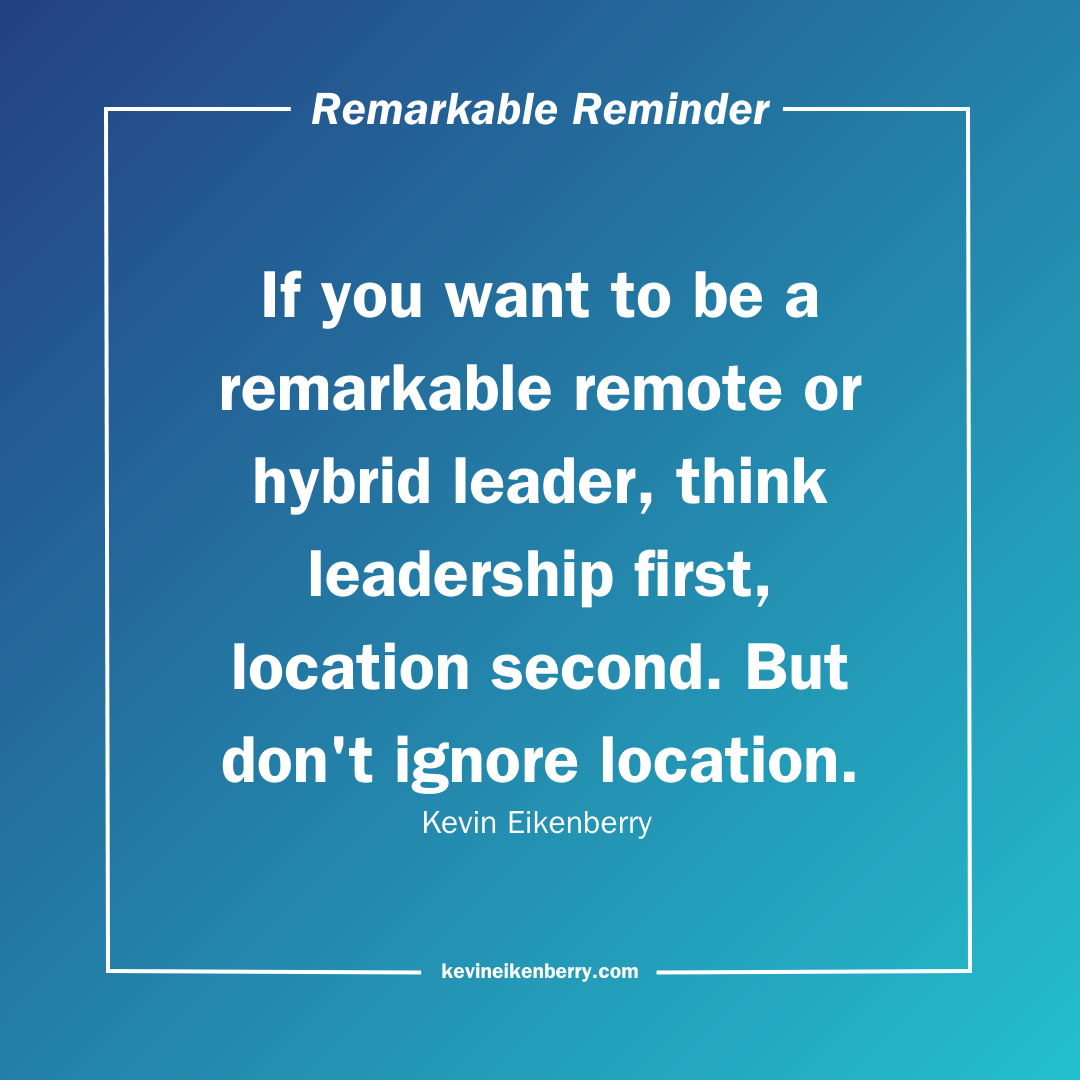Over the last few years, remote work has shifted from an occasional convenience to an essential part of our professional lives. As someone who has spent a significant amount of time researching and practicing leadership in remote environments, I can tell you this: leading remotely isn’t the same as leading in person. While many of us adapted quickly during the early days of the pandemic, the ongoing challenge is refining our skills to thrive in a hybrid or fully remote world.
In this post, I’ll share four foundational rules of remote leadership. These are principles I’ve seen work time and time again, whether you're leading a team across the globe or managing employees working from home a few miles away. These rules, which are the foundation of The Long-Distance Leader, a book I co-wrote with Wayne Turmel (now in its second edition), will help you not just survive but excel as a remote leader.
1. Accept That Leading Remotely Requires Different Skills
Here’s a truth that seems obvious but is often forgotten: leading remotely requires different skills than leading in person. Early in the pandemic, we all had to pivot quickly to make remote leadership work. But over time, some leaders started to slip back into old habits, assuming they could lead their teams remotely in the same way they always had.
This approach doesn’t work. Leading remotely is different. We can’t rely on the casual hallway conversations, the ability to gauge body language, or the immediate feedback we get in an office setting. To be effective, we must be intentional about how we lead from a distance. This requires a new mindset and the recognition that we have to adjust our leadership style for the remote environment. It’s about understanding that leading remotely takes a different approach, and we need to be proactive in making that shift.
2. Use Technology as a Tool, Not a Barrier or Excuse
If you lead remotely, you’re using more technology than ever. Tools like Zoom, Teams, Slack, and a whole host of others are now central to how we communicate and collaborate. But here’s the thing: technology should be a tool that enhances our leadership, not a barrier or an excuse for poor results.
Too often, I’ve seen leaders treat technology like a burden. They don’t fully invest in learning how to use it, or worse, they allow their teams to use the “technology isn’t my thing” excuse for poor performance or communication breakdowns. If we’re going to lead remotely effectively, we have to embrace technology as the tool it is. That means getting comfortable with the platforms we use, making sure our teams are proficient in them, and never allowing technology to become an excuse for not achieving our goals.
3. Building Trust at a Distance Takes Effort
In any leadership situation, trust is essential. But when we’re leading remotely, building and maintaining trust doesn’t happen by accident—it requires intentional effort. This is a topic I recently discussed in depth, but the key takeaway is this: trust is foundational to team success, and as leaders, we have to work to build it, especially at a distance.
When we aren’t in the same physical space, it’s easier for miscommunications to occur, for misunderstandings to fester, and for relationships to weaken. If we want high levels of trust in our remote teams (and we should), we have to be proactive. We need to create opportunities for connection, be transparent in our communication, and consistently show that we have our team’s back—even from miles away.
4. Think Leadership First, Location Second
The final rule is one I can’t stress enough: think leadership first, location second. This principle is the first and last rule in both editions of The Long-Distance Leader because it speaks to the heart of what leadership really is.
Yes, leading remotely requires different skills, and yes, location changes how we do certain things, but the core principles of leadership remain the same. Leadership is about understanding people, fostering relationships, and helping your team succeed. These things don’t change, no matter where you or your team are located. Location does tweak how we lead, but it doesn’t change the fundamental truths about leadership. We must always put leadership first and adapt our tactics to fit the context, not the other way around.
Leading remotely is challenging, but it’s also an incredible opportunity to grow as a leader. By accepting that remote leadership requires different skills, using technology as a tool, building trust intentionally, and focusing on leadership first, you’ll set yourself—and your team—up for success in this new world of work.
Follow The Remarkable Leadership Podcast


What are some key differences between leading remotely and leading in person?